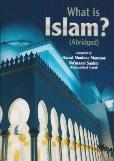What is Islam - eBook
Displaying items by tag: hazrat umar
Hazrat Bilaal (radhiyallahu 'anhu) - Part Six
Leaving Madinah Munawwarah after the Demise of Rasulullah (sallallahu ‘alaihi wasallam):
There are two views recorded with regards to whether or not Hazrat Bilaal (radhiyallahu ‘anhu) remained the mu’azzin of Madinah Munawwarah after the demise of Rasulullah (sallallahu ‘alaihi wasallam).
The First View:
The first view is that Hazrat Bilaal (radhiyallahu ‘anhu) did not remain the mu’azzin of Madinah Munawwarah after the demise of Rasulullah (sallallahu ‘alaihi wasallam). After the demise of Rasulullah (sallallahu ‘alaihi wasallam), he felt it difficult to remain in Madinah Munawwarah and thus went to Shaam to engage in Jihaad.
This is the preferred view of ‘Allaamah ibn Katheer (rahimahullah) (Al Bidaayah wan Nihaayah 6/61), ‘Allaamah Suyooti (rahimahullah) (Is‘aaf 751) and 'Allaamah Ibn Hibbaan (rahimahullah) (Thiqaat 1/264)
Hazrat Sa‘eed bin ‘Abdul ‘Azeez (rahimahullah) and Hazrat ibn Jaabir (rahimahullah) both narrate that Hazrat Bilaal (radhiyallahu ‘anhu) did not call out the azaan after the demise of Rasulullah (sallallahu ‘alaihi wasallam) and intended to leave Madinah Munawwarah to strive in Jihaad. When Hazrat Abu Bakr (radhiyallahu ‘anhu) came to know of this, he asked Hazrat Bilaal (radhiyallahu ‘anhu) to remain in Madinah Munawwarah to which Hazrat Bilaal (radhiyallahu ‘anhu) responded by requesting, “If you had freed me for the sake of Allah Ta‘ala then please allow me to leave.” Hazrat Abu Bakr (radhiyallahu ‘anhu) relented and allowed Hazrat Bilaal (radhiyallahu ‘anhu) to leave. Hazrat Bilaal (radhiyallahu ‘anhu) then moved to Shaam.
(Siyar A‘laam min Nubalaa 3/222)
Hazrat Bilaal (radhiyallahu ‘anhu) - Part Three
Appointed as Mu’azzin of Rasulullah (sallallahu ‘alaihi wasallam):
When Rasulullah (sallallahu ‘alaihi wasallam) made Hijrah (migrated) to Madinah Munawwarah, he constructed the musjid. After constructing the musjid, he consulted the Sahaabah (radhiyallahu ‘anhum) regarding the method to be adopted to call people for salaah. It was the burning desire within the heart of Rasulullah (sallallahu ‘alaihi wasallam) that all the Sahaabah (radhiyallahu ‘anhum) congregate and perform their salaah together in the musjid. Rasulullah (sallallahu ‘alaihi wasallam) was neither pleased with the Sahaabah (radhiyallahu ‘anhum) performing their salaah in the musjid at different times nor in their homes or at other places.
The Sahaabah (radhiyallahu ‘anhum) presented various suggestions in regard to how people could be called for salaah. Some of the suggestions of the Sahaabah (radhiyallahu ‘anhum) were that a fire be lit or a flag be hoisted. On seeing the fluttering flag or the flames and smoke of the fire, people would understand that it is the time of salaah and thereby inform others to come to the musjid for salaah. Other suggestions were that a horn be sounded or that the Naqoos (two sticks) be struck upon each other to alert people that it is the time for salaah. Rasulullah (sallallahu ‘alaihi wasallam) was not pleased with these opinions. Rasulullah (sallallahu ‘alaihi wasallam) did not want his Ummah to emulate the Christians, Jews and Kuffaar in aspects of their deen or their worldly life. If the Muslims were to adopt these methods, it would result in them resembling the disbelievers in their deen and furthermore, it would lead to confusion coming about in the salaah times as the disbelievers were calling people at other times through these same methods. No conclusion was reached in that gathering and the matter was thus left undecided.







